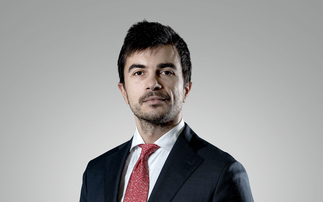PARTNER INSIGHT: Matt Murphy, Institutional Portfolio Manager at Eaton Vance, says the primary source of risk in emerging-market debt is benchmark construction
During the 1990s, the appetite for emerging market (EM) debt grew not only in volume, but also in the types of instruments traded, the number of trading houses involved, and the size of the market in relation to others worldwide. This distinct asset class continues to be a favoured area of fixed income with its high yields and value - it is still relatively cheap versus other global options. In addition to this, the emerging markets and developing economies have become increasingly important in the global economy. They now account for more than 75% of global growth in output and consumpt...
To continue reading this article...
Join Investment Week for free
- Unlimited access to real-time news, analysis and opinion from the investment industry, including the Sustainable Hub covering fund news from the ESG space
- Get ahead of regulatory and technological changes affecting fund management
- Important and breaking news stories selected by the editors delivered straight to your inbox each day
- Weekly members-only newsletter with exclusive opinion pieces from leading industry experts
- Be the first to hear about our extensive events schedule and awards programmes






